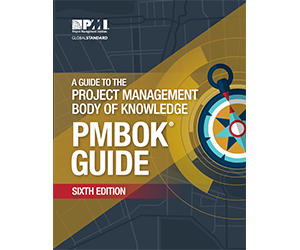Agile Sprint Planning
The Agile project management revolution has affected planning more than anything else. Whereas project managers used to create a complex plan of the entire project and then hope to stick with the plan, today project management consists of iterations, or sprints, which adjust themselves to new project realities at each....
Project Schedule Planning
A project manager must deal with many different issues on a daily basis, for example, The project deadlines are firm but the resources are occupied. The deadlines have been tightened but the quality must stay the same. The customer wants a higher quality product at the same price. In order....
Project Quality Control
Controlling the quality of a project’s deliverables can be the silver bullet that makes everything else feel easy. Unfortunately, it’s often easier said than done but there are tried and true techniques that help you get there. On the flip side, a single poor quality deliverable can create a cycle....
The Cost of Quality
The American Society for Quality (ASQ) suggests that the Cost of Quality is usually around 15 - 20% of sales, often as high as 40% in some organizations. Clearly, you need to know what that means and how to prevent errors and omissions from hurting your business. Cost of Quality....
How to Create a Project Task List
Breaking a project into manageable parts is one of the most foundational parts of project management. Megaprojects like highrise buildings and airports get managed in phases and tasks, so the same level of expertise would probably add value to most small projects. Virtually every other aspect of project management is....
How to Write a Schedule Management Plan
With little exception, missing deadlines reflects poorly on the project manager and sometimes has financial consequences too. Because projects are by definition temporary, someone has authorized the project and expects its deliverables in a timely fashion. To meet the deadlines, a schedule management plan is produced which is a subset....
The 10 PMBOK Knowledge Areas
In the Project Management Body of Knowledge (PMBOK) the process groups are the chronological phases that the project goes through, and the knowledge areas occur throughout any time during the process groups. The process groups are horizontal, and the knowledge areas are vertical. They are the core technical subject matter....
Guide to Requirements Management
Many projects have a long list of requirements, from product features to design standards to quality metrics. Each of these requirements originated from a stakeholder, manager, or company policy. To make matters difficult, the stakeholder often can't even articulate their requirements or how they would like it implemented into a....
How to Use a RACI Chart to Simplify Responsibilities
A RACI Chart (pronounced "racy") is a visual representation of the responsibilities of a project. RACI stands for Responsible - Accountable - Consulted - Informed. It is an excellent way to communicate what the responsibilities of each member of the project team are. In a RACI chart, each project task....
The 6 Steps of Resource Allocation
Resource allocation is the process of assigning and scheduling resources to project tasks. Resources are the life blood of project management. Resources are used to carry out the project, and are returned to their owners if not consumed by the project. There are 6 steps to performing a proper resource....










